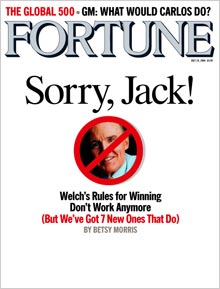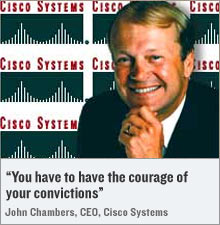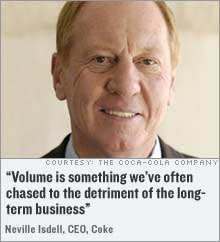|
Tearing up the Jack Welch playbook The Six Sigma master was once the undisputed authority in management. But Fortune is finding that today's smart CEOs are following a different set of rules.
NEW YORK (Fortune) -- Once upon a time, there was a route to success that corporate America agreed on. But in today's fast-changing landscape, that old formula is getting tired.
|




